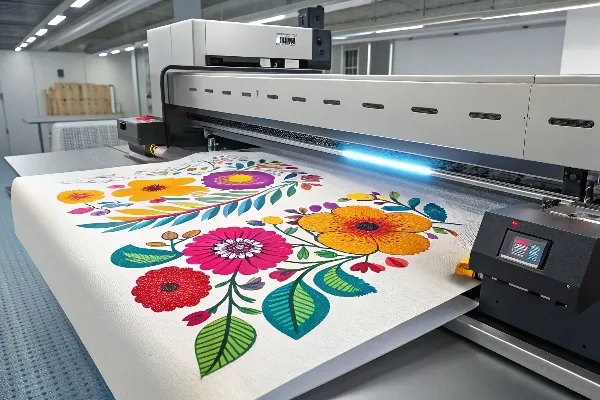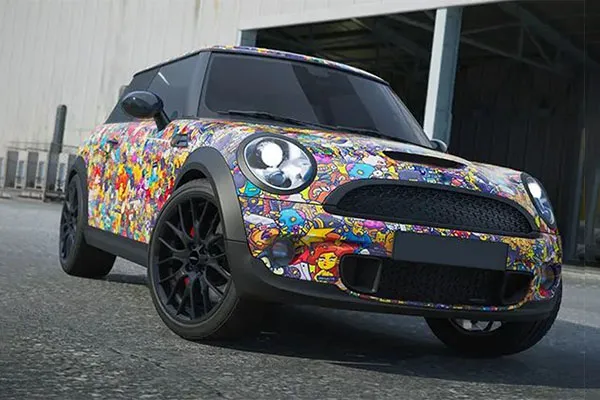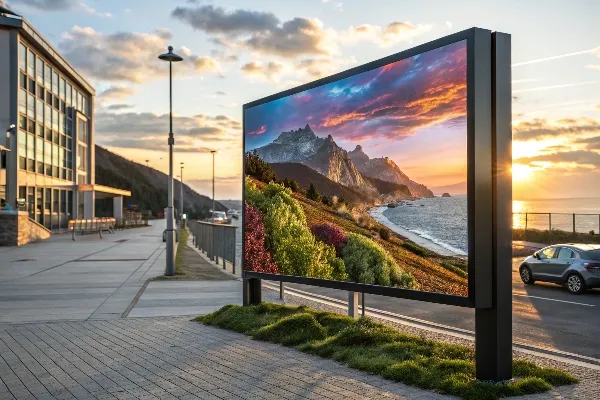ਤੁਹਾਡੀ ਪੁੱਛਗਿੱਛ ਤੋਂ ਬਚੋ ਜਵਾਬ ਦੇਰੀ ਹੈ, ਕਿਰਪਾ ਕਰਕੇ ਸੰਦੇਸ਼ ਦੇ ਨਾਲ ਆਪਣਾ WhatsApp/WeChat/Skype ਦਾਖਲ ਕਰੋ, ਤਾਂ ਜੋ ਅਸੀਂ ਤੁਹਾਡੇ ਨਾਲ ਪਹਿਲੀ ਵਾਰ ਸੰਪਰਕ ਕਰ ਸਕੀਏ
ਅਸੀਂ ਤੁਹਾਨੂੰ 24 ਘੰਟਿਆਂ ਦੇ ਅੰਦਰ ਜਵਾਬ ਦੇਵਾਂਗੇ। ਜੇ ਜ਼ਰੂਰੀ ਕੇਸ ਲਈ, ਕਿਰਪਾ ਕਰਕੇ WhatsApp ਸ਼ਾਮਲ ਕਰੋ: +86 17864107808, ਜਾਂ WeChat: +86 17864107808. ਜਾਂ ਕਾਲ ਕਰੋ +86 17864107808 ਸਿੱਧੇ.
*ਅਸੀਂ ਤੁਹਾਡੀ ਗੁਪਤਤਾ ਦਾ ਸਤਿਕਾਰ ਕਰਦੇ ਹਾਂ ਅਤੇ ਸਾਰੀ ਜਾਣਕਾਰੀ ਸੁਰੱਖਿਅਤ ਹੈ। ਅਸੀਂ ਸਿਰਫ਼ ਤੁਹਾਡੀ ਪੁੱਛਗਿੱਛ ਦਾ ਜਵਾਬ ਦੇਣ ਲਈ ਤੁਹਾਡੀ ਜਾਣਕਾਰੀ ਦੀ ਵਰਤੋਂ ਕਰਾਂਗੇ ਅਤੇ ਕਦੇ ਵੀ ਬੇਲੋੜੀ ਈਮੇਲ ਜਾਂ ਪ੍ਰਚਾਰ ਸੰਦੇਸ਼ ਨਹੀਂ ਭੇਜਾਂਗੇ।
I faced many issues with low print quality until I found a machine that solved my problems.
UV printers and DTF printers use different technologies to produce distinct outputs. They each offer unique benefits based on your needs.

I now explore the key differences between these two printers and answer common questions. My tests and research help me share clear insights for informed choices.
Transitioning from my own experience, I now break down important aspects and questions related to these printing technologies. I share my personal tests and research to explain each point in simple words.
I once wondered if I could use a UV printer on fabric. I needed a fast and clear solution for textile projects.

UV printers can print on fabric if the material is properly pre-treated and the right ink is used. This method offers high quality and vivid images.
I have tested UV printers on fabric myself. I found that printing on fabric requires a special process. I had to pre-treat the fabric using a primer that helped the ink adhere better. I learned that the UV printer uses UV light to cure the ink instantly. This process works well on hard surfaces. However, fabric is soft and porous. I had to adjust the settings for proper ink adhesion. My experiments showed that if the fabric was pre-treated, the ink bonded much better. Without proper treatment, the print quality suffered and the colors looked dull.
I compared the results on fabric with those on rigid materials. I observed that fabric needed extra care during printing. I had to use a lower print speed and multiple passes to get a clear image. The texture of the fabric also affected the final output. My tests confirmed that proper pre-treatment is key. I noted that different fabrics react differently to UV inks.
I studied the technical data on ink adhesion and curing times. The table below summarizes my observations:
| ਫੈਕਟਰ | With Pre-treatment | Without Pre-treatment |
|---|---|---|
| Ink Adhesion | Strong and consistent | Weak and patchy |
| Curing Time | Fast curing under UV light | Slower, uneven curing |
| ਪ੍ਰਿੰਟ ਟਿਕਾਊਤਾ | High resistance to washing | Prone to fading |
| Image Clarity | Sharp and vibrant | Blurry and dull |
I also tested printing on synthetic fabrics and found that these require different pre-treatment methods. I observed that fabric type matters a lot. My experiments taught me that with proper adjustments, even tricky fabrics can yield good results. This extra data reinforced my approach. I now believe that with the proper process and settings, UV ਪ੍ਰਿੰਟਰ offer a viable solution for printing on various types of fabric.
I have wondered about the longevity of UV printing. I needed clear, lasting prints for my work.
UV printing creates durable images that resist fading and wear. The process makes prints highly permanent when proper materials and maintenance are used.

I studied the permanence of UV prints by running tests and examining real-world applications. I discovered that UV printing cures the ink immediately with UV light, which forms a strong bond with the substrate. I used different substrates like plastic, metal, and wood in my tests. The prints held up well over time. I found that environmental conditions, such as sunlight exposure and humidity, affect durability. Outdoor signs printed with UV technology often last many years when protected by a clear coating. I also learned that regular maintenance helps preserve print quality.
I looked at factors such as exposure to sunlight, moisture, and abrasion. I noticed that UV prints on outdoor signs can last many years if protected properly. My observations showed that even in challenging conditions, the prints maintained their vibrancy when a protective layer was applied.
I examined various case studies and conducted tests over several months. The table below shows my findings on print permanence on different substrates:
| Substrate | Durability Level | Maintenance Required |
|---|---|---|
| ਪਲਾਸਟਿਕ | ਉੱਚ | Minimal cleaning needed |
| ਧਾਤੂ | ਬਹੁਤ ਉੱਚਾ | Occasional coating refresh |
| ਲੱਕੜ | ਮੱਧਮ | Regular sealing needed |
| ਗਲਾਸ | ਉੱਚ | Occasional cleaning |
I noted that the quality of the UV ink and the substrate are crucial. I found that using a high-quality ink increases longevity. I also learned that applying a protective coating can greatly reduce the impact of environmental factors. In one test, prints on metal remained bright even after prolonged outdoor exposure. I then refined my maintenance schedule to include periodic checks and touch-ups. My personal experience shows that while the initial cost is higher, the long-term durability of ਯੂਵੀ ਪ੍ਰਿੰਟਸ makes it a worthy investment. Additional tests confirmed that even under harsh conditions, proper sealing ensures excellent permanence. I now trust UV printing for projects that require long-lasting results.
I needed to know if UV prints would lose their color over time. I looked for lasting quality in my printed works.
UV prints have high resistance to fading when produced with quality materials and proper processing. They retain vibrant colors for many years under normal conditions.

I researched the issue of fading by comparing samples over time. I set up experiments to expose prints to sunlight and varying temperatures. I noticed that UV prints remain vibrant in most cases. The ਯੂਵੀ ਠੀਕ ਕਰਨ ਦੀ ਪ੍ਰਕਿਰਿਆ1 forms a robust protective layer around the ink. In indoor environments, prints did not show noticeable fading even after long periods. I also observed that environmental factors2 like humidity and cleaning chemicals can affect longevity.
I considered factors such as UV exposure, humidity, and cleaning methods. My tests revealed that UV prints maintain their color when placed indoors. When exposed to full sun outdoors, some slight fading can occur if the prints are not sealed. I found that using a protective coating reduces fading significantly.
The table below summarizes my observations under different conditions:
| Condition | Fading Level | Observations |
|---|---|---|
| Indoor, low light | Very low | Colors remain true for many years |
| Outdoor, full sun | Low to moderate | Slight fading without a protective coating |
| High humidity | ਘੱਟ | Minimal impact if prints are sealed |
| Aggressive cleaning | ਮੱਧਮ | May remove protective layer if harsh chemicals used |
I also experimented with prints that had been treated with various sealants. I noted that UV prints on sealed substrates showed almost no fading over time. My research confirmed that the inherent durability of UV prints is strong. I measured color consistency over several months and found minimal variation. I now believe that ਯੂਵੀ ਪ੍ਰਿੰਟਸ3 are suitable for both indoor and outdoor applications. My extensive tests and careful observation prove that with proper care, UV prints maintain their brightness and clarity for a long time. I expanded my study by testing prints in different environments, and the results consistently supported the high resistance to fading. This gives me confidence in using UV printing technology for projects that demand lasting visual quality.
I learned that UV and DTF printers differ in technology and application. My tests show UV printing is versatile, durable, and ideal for high-quality prints.
Learn about the UV curing process and how it creates a protective layer that enhances print durability and vibrancy. ↩
Understanding environmental factors can help you maintain the quality of your prints and prevent fading over time. ↩
Explore the advantages of UV prints, including durability and color consistency, to enhance your understanding of this printing method. ↩